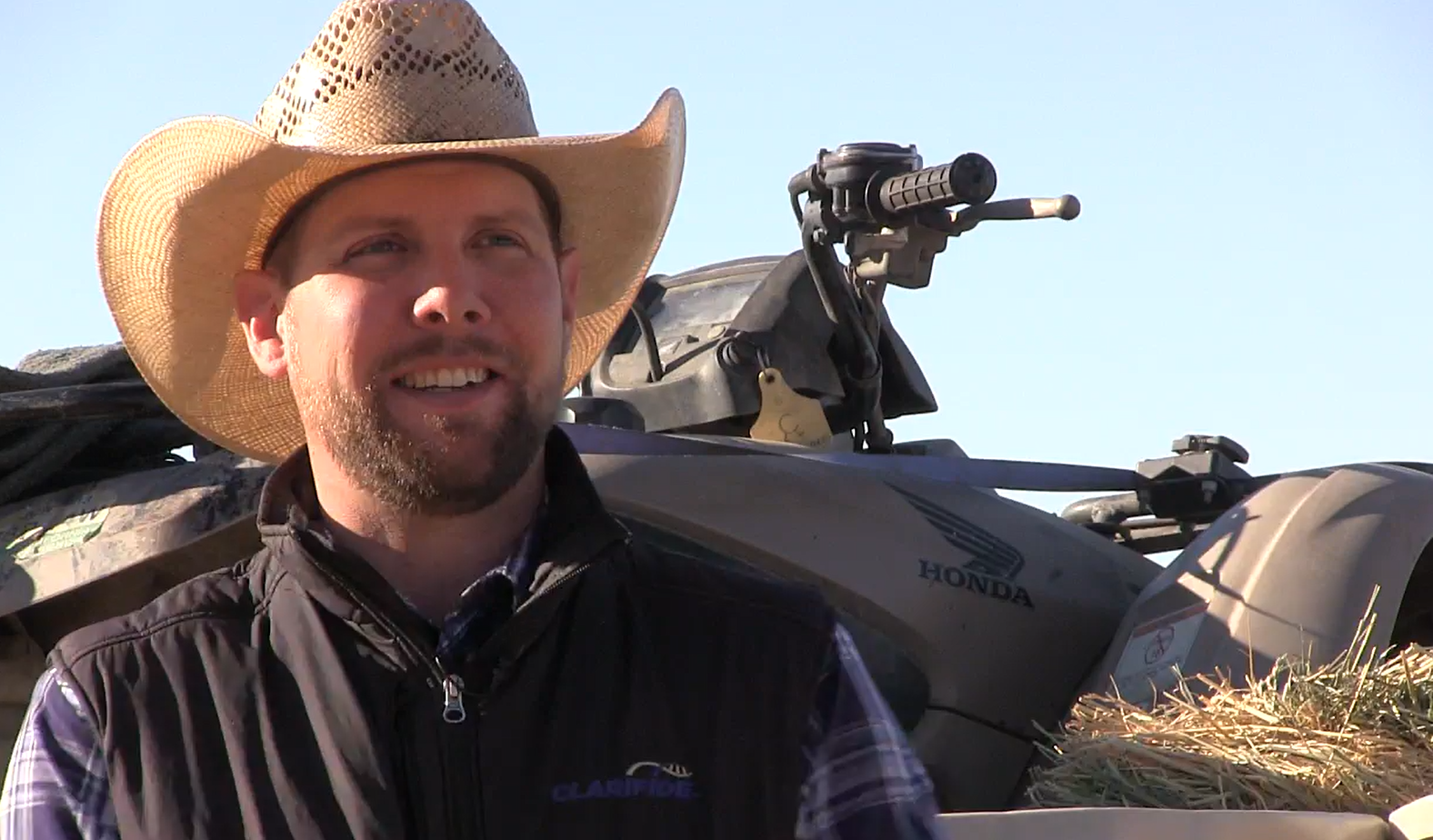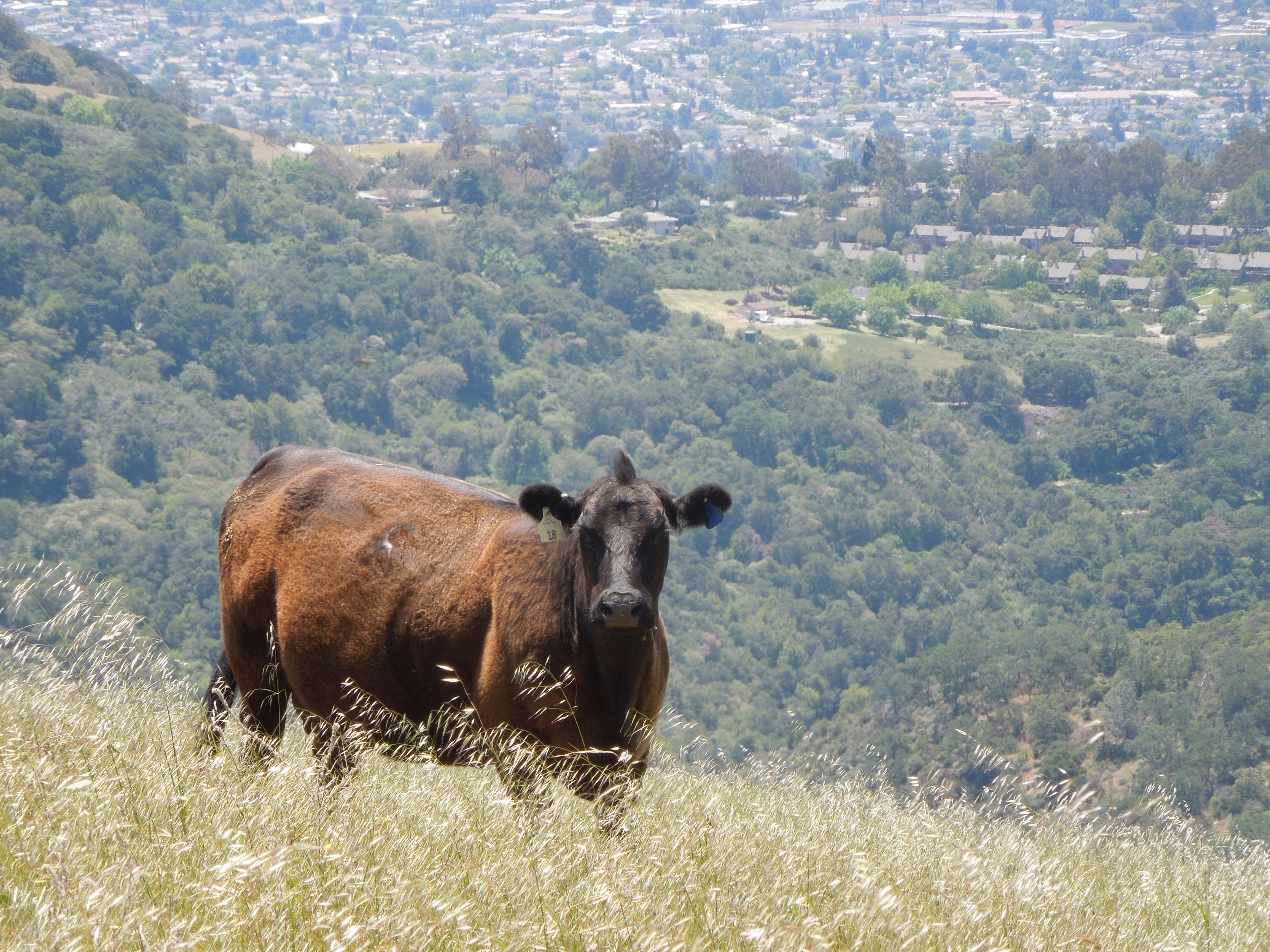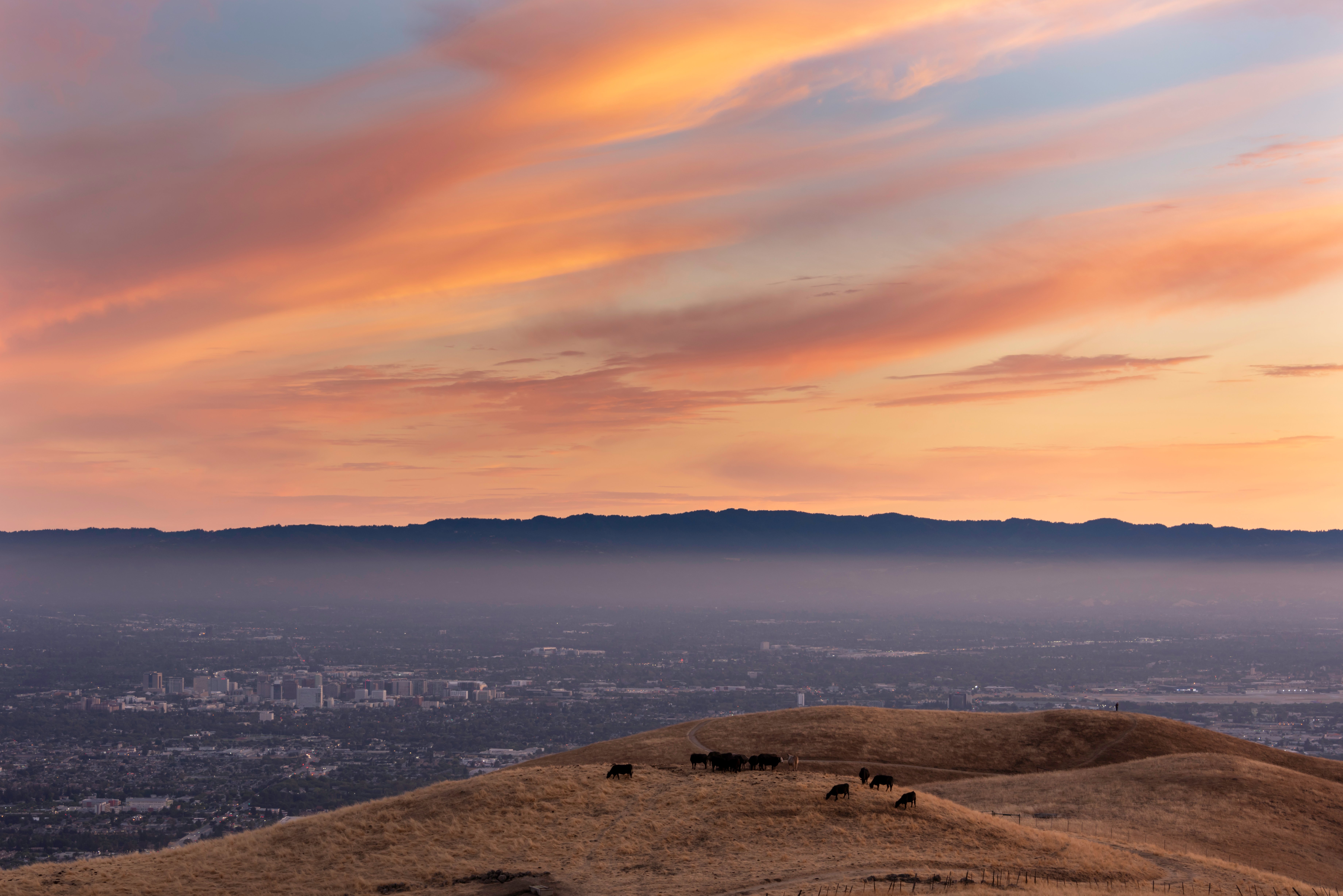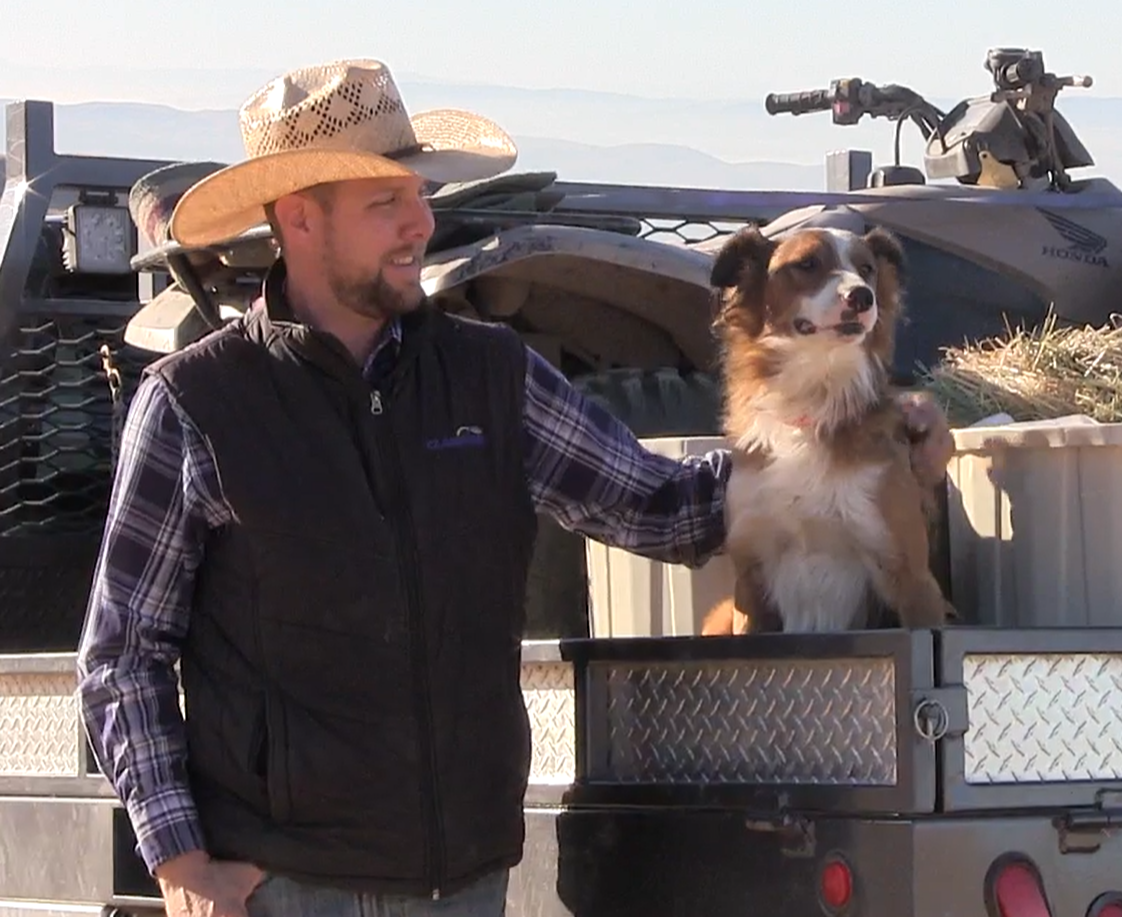Community Connections highlights the many leaders, partners, and neighbors who make a difference in our community. This month we are featuring Clayton Koopmann, cattle rancher and rangeland ecologist/rangeland management specialist
Clayton Koopmann is a fifth-generation cattle rancher who has seen the Bay Area grow and change. His family settled on a homestead near Sunol, CA in 1918. Koopmann learned the ropes of ranching from a young age and went on to earn his Bachelor of Science in Agricultural Management and Rangeland Resources at the University of California, Davis. After coming home, he started his own herd to carry on the family tradition.
In the early 2000’s, researchers began to realize the ecological benefits of grazing livestock on native grasslands. Cattle consume fast-growing exotic grasses, which helps protect and enhance habitat for rare species such as the threatened Bay checkerspot butterfly, Western burrowing owl, and many native plants. Stock ponds for livestock provide aquatic habitat for threatened species like the California red-legged frog, California tiger salamander, and Pacific pond turtle. Finally, grazing mammals keep dry vegetation from accumulating in the preserves, helping to reduce future risk of catastrophic wildfires.
 In 2008, Koopmann helped Midpeninsula Open Space District start a conservation grazing program and develop a plan to reintroduce cattle to open space preserves. He also worked with the San Francisco Public Utilities Commision to utilize livestock grazing to manage grasslands and rangeland resources within the Alameda Creek Watershed.
In 2008, Koopmann helped Midpeninsula Open Space District start a conservation grazing program and develop a plan to reintroduce cattle to open space preserves. He also worked with the San Francisco Public Utilities Commision to utilize livestock grazing to manage grasslands and rangeland resources within the Alameda Creek Watershed.
In 2013, the Santa Clara Valley Open Space Authority granted Koopmann a contract to graze about 850 acres at Sierra Vista Open Space Preserve, pursuant to the Grazing Management Policy. Over the last five years, Koopmann has worked with the Authority to improve infrastructure for cattle grazing across Sierra Vista. They improved fencing and water tanks, making sure they are evenly distributed around so that cattle can be moved around the preserve strategically, to focus on various seasonal grazing objectives like maintaining burrowing owl habitat, red-legged frog habitat, or, as of right now, fire prevention.
 “We use the cattle as much as we can to provide clean fuel breaks to prevent wildfires,” he said. “In the past year, we’ve had two bigger fires up at Sierra Vista. In both cases the fire department was able to stop both of them right along the fenceline because the grass was short.”
“We use the cattle as much as we can to provide clean fuel breaks to prevent wildfires,” he said. “In the past year, we’ve had two bigger fires up at Sierra Vista. In both cases the fire department was able to stop both of them right along the fenceline because the grass was short.”
At the time of the interview, Koopmann said CalFire had reported that Santa Clara County was at 150-180% of normal forage production due to above average rainfall, an indication of increased fire risk due to plant growth that can fuel wildfires.
“Due to the increased fire risk, I’m currently changing my rotation around to graze another pasture that we usually don’t graze until later in the fall. This will let us focus on removing fuel along Sierra Road.”
 While Koopmann expresses concern for the amount of land that has been lost to urbanization over the last several decades, he’s excited by the recognition of how grazing can help to protect against habitat and species loss. He’s also enthusiastic about the opportunity to be an advocate for the land and his industry.
While Koopmann expresses concern for the amount of land that has been lost to urbanization over the last several decades, he’s excited by the recognition of how grazing can help to protect against habitat and species loss. He’s also enthusiastic about the opportunity to be an advocate for the land and his industry.
“When I’m out in the preserve, I love to stop and answer questions about grazing and our work,” he says. “I know that does a lot of good, [visitors] take that message and share it with their friends.”

